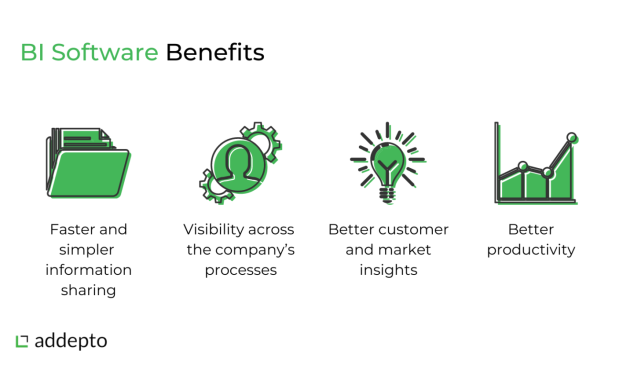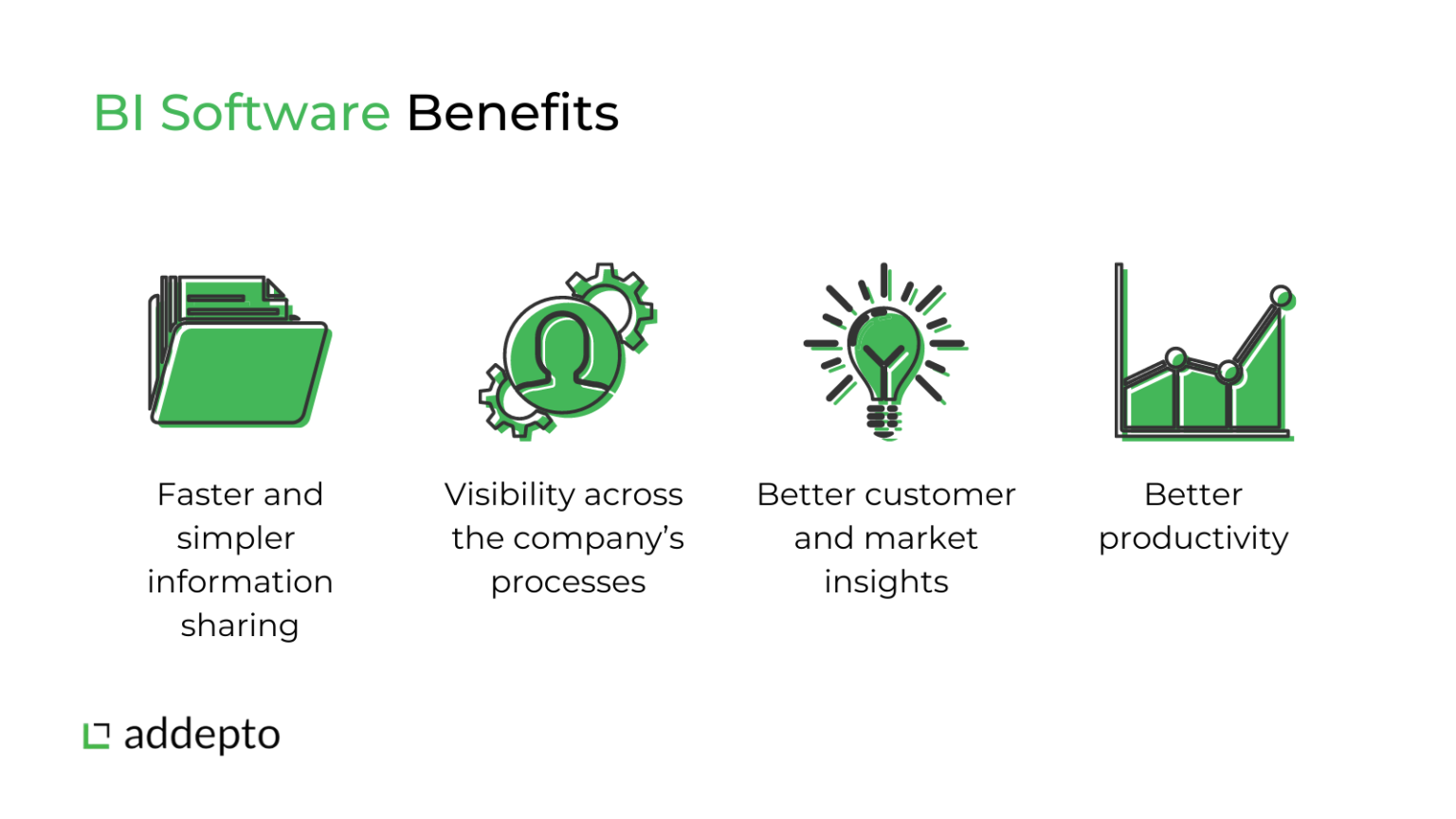
Business Intelligence Software Tips That Deliver: Maximizing Data Insights
In today’s data-driven world, businesses are drowning in information. The challenge isn’t just collecting data, but extracting meaningful insights that drive strategic decisions. This is where business intelligence (BI) software becomes indispensable. However, simply implementing BI software isn’t enough. To truly unlock its potential, you need to employ effective strategies. This article delves into essential business intelligence software tips that deliver tangible results. We’ll explore practical advice to help you leverage your data effectively and gain a competitive edge.
Choosing the Right Business Intelligence Software
The first step is selecting the right BI software for your specific needs. This involves a thorough evaluation of your business requirements, data sources, and technical capabilities. Consider the following factors:
- Data Integration: Ensure the software seamlessly integrates with your existing data sources, including databases, spreadsheets, and cloud platforms.
- Reporting and Visualization: Look for robust reporting and visualization features that allow you to create insightful dashboards and reports.
- Scalability: Choose a solution that can scale to accommodate your growing data volumes and user base.
- User-Friendliness: Opt for software with an intuitive interface and easy-to-use tools.
- Cost: Evaluate the pricing models and ensure they align with your budget.
Carefully compare different BI software vendors, considering their features, pricing, and customer reviews. Some popular options include Tableau, Power BI, Qlik Sense, and Looker. The right choice will empower your business to make informed decisions.
Data Preparation: The Foundation of Effective BI
Data preparation is a critical, often overlooked, aspect of business intelligence. The quality of your data directly impacts the accuracy and reliability of your insights. Before feeding data into your BI software, you need to clean, transform, and validate it. This process, often referred to as ETL (Extract, Transform, Load), involves:
- Data Extraction: Gathering data from various sources.
- Data Transformation: Cleaning, standardizing, and converting data into a usable format.
- Data Loading: Loading the transformed data into your BI software.
Implement a robust data governance strategy to ensure data quality and consistency. This includes defining data standards, establishing data validation rules, and monitoring data quality metrics. Neglecting data preparation can lead to inaccurate reports and flawed decision-making. Proper data preparation is a core business intelligence software tip.
Building Effective Dashboards and Reports
Once your data is prepared, you can start building dashboards and reports. These are the primary tools for visualizing and analyzing your data. Here are some business intelligence software tips for creating effective dashboards:
- Define Clear Objectives: Before you start, identify the key performance indicators (KPIs) you want to track and the insights you want to gain.
- Choose the Right Visualizations: Select appropriate charts and graphs to effectively communicate your data. Use bar charts for comparisons, line charts for trends, and pie charts for proportions.
- Keep it Simple: Avoid clutter and focus on presenting the most important information in a clear and concise manner.
- Use Interactive Elements: Enable users to drill down into the data, filter by different criteria, and explore relationships.
- Provide Context: Add titles, labels, and annotations to help users understand the data.
Regularly review and refine your dashboards and reports based on user feedback. Ensure that they are easy to understand, visually appealing, and provide actionable insights. Effective reporting is a cornerstone of successful business intelligence initiatives.
Leveraging Advanced Analytics
Beyond basic reporting and dashboards, business intelligence software offers advanced analytics capabilities. These tools can help you uncover hidden patterns, predict future trends, and gain a deeper understanding of your business. Consider incorporating the following:
- Predictive Analytics: Use historical data to forecast future outcomes. This can help you anticipate customer behavior, optimize inventory levels, and identify potential risks.
- Data Mining: Discover patterns and relationships within your data. This can help you identify customer segments, understand product performance, and improve marketing campaigns.
- Statistical Analysis: Perform statistical tests to validate your findings and draw meaningful conclusions.
- Machine Learning: Leverage machine learning algorithms to automate tasks, personalize customer experiences, and improve decision-making.
Investing in advanced analytics can unlock significant value from your data and provide a competitive advantage. These advanced features are key in modern business intelligence implementations.
Promoting Data Literacy and User Adoption
Implementing business intelligence software is only half the battle. To maximize its impact, you need to foster data literacy and encourage user adoption throughout your organization. This involves:
- Training and Education: Provide training to employees on how to use the software and interpret data.
- Data Governance: Establish clear data governance policies and procedures to ensure data quality and consistency.
- Communication: Regularly communicate the value of business intelligence and share success stories.
- Collaboration: Encourage collaboration and knowledge sharing among users.
- Feedback: Collect feedback from users and make improvements to the software and dashboards.
A data-driven culture is essential for realizing the full potential of your business intelligence investment. Successful user adoption is a critical element of these business intelligence software tips.
Security and Data Privacy
Protecting your data is paramount. Implement robust security measures to safeguard your sensitive information. This includes:
- Access Control: Restrict access to data based on user roles and permissions.
- Data Encryption: Encrypt sensitive data both in transit and at rest.
- Regular Backups: Regularly back up your data to prevent data loss.
- Compliance: Ensure compliance with relevant data privacy regulations, such as GDPR and CCPA.
Data breaches can have severe consequences, including financial losses, reputational damage, and legal penalties. Prioritize data security and privacy to protect your business and your customers. Security is one of the most important business intelligence software tips.
Continuous Improvement and Iteration
Business intelligence is not a one-time project. It’s an ongoing process of continuous improvement. Regularly review your dashboards, reports, and data sources to ensure they meet your evolving business needs. Consider the following:
- Performance Monitoring: Monitor the performance of your BI software and identify areas for optimization.
- User Feedback: Gather feedback from users and make improvements to the software and dashboards.
- New Data Sources: Explore new data sources to expand your insights.
- Emerging Technologies: Stay up-to-date with the latest business intelligence trends and technologies.
By embracing continuous improvement, you can ensure that your business intelligence efforts remain relevant and effective. This iterative approach is a key aspect of successful business intelligence implementation.
Conclusion: Delivering Results with Business Intelligence
Implementing and utilizing business intelligence software effectively requires a strategic approach. By following these business intelligence software tips, businesses can transform raw data into actionable insights. This leads to better decision-making, improved efficiency, and a stronger competitive advantage. Remember to choose the right software, prepare your data thoroughly, build effective dashboards, leverage advanced analytics, promote data literacy, prioritize security, and embrace continuous improvement. By focusing on these key areas, you can unlock the full potential of your data and drive significant business value.
[See also: Related Article Titles]

